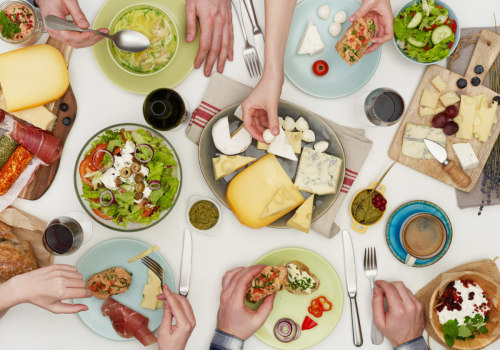In the context of diet, convenience is generally associated with less healthy foods. Given the reality of presently biased preferences, if convenience were associated with healthier foods and less healthy foods were less convenient, people would likely consume healthier foods. Another important factor is convenience, and not necessarily by choice. What he calls time, poverty, plays an important role in how food is chosen.
In most homes, there is no longer a person who can devote enough time to shopping and preparing meals. This has led to tremendous changes in the way people relate to food. Reliance on restaurant food, fast food, and frozen dinners dominates much of today's gastronomic culture. On the contrary, cooking from scratch has become almost a lost art.
The average value of the cooking effort indicator decreased in the order of dinner, breakfast and lunch, and the average value of the intensity indicator of precooked food consumption was in the reverse order, suggesting that there may be a negative correlation between cooking effort and the intensity of use of precooked foods. Ready-to-eat foods include many types of food, from bananas to frozen pizza, that require little or no preparation. The purpose of this study is, based on theoretical considerations on the production and consumption of food at home, to build a model to analyze the choice behavior of the domestic cook in relation to prepared food and to use the model to quantitatively show the difference in the behavior of home cooks with diverse backgrounds. Consumers' decisions about the amount of different types of convenience foods they buy are influenced by time constraints, prices, the food environment and financial resources.
It is desirable that intelligent food systems that use information and communication technologies (ICTs) provide people with greater knowledge about eating habits and help them to use pre-cooked foods. While these precooked foods save time, they tend to have lower nutritional values and may be more expensive than foods that require more time to prepare. The results showed that home cooks who have special dietary preferences may not be satisfied with accepting pre-cooked foods bought in the market as they are, and that these home cooks will require more cooking effort to obtain greater satisfaction. Therefore, with our model, we examined the conditions necessary for these elderly people to be able to use precooked food effectively and indicated that these conditions could be created within the framework of an intelligent food system that provides information in an appropriate way using ICTs.
Based on the relationship between convenience indicators and cooking effort under the condition of maximizing utility, the elasticity of cooking effort was estimated according to the convenience of the food (this elasticity is similar to that of the replacement between food and cooking time in previous studies). On the other hand, the Supplemental Nutrition Assistance Program (SNAP) provides program participants with funds to buy food at grocery stores and, as a result, SNAP participants tend to buy more food at grocery stores and less at restaurants than non-participants who are eligible for SNAP. If older people can get adequate information about the stores that sell convenience foods that are best suited for them, they may be able to accept precooked foods as they are without having to put more effort into cooking. As mentioned in the previous section, in the case of intelligent food systems, the meal production function of elderly home cooks will shift to saving time if prepared food is provided along with appropriate information.
Households where all adults are employed buy 12 percent less ready-to-eat food in grocery stores and 72 percent more food in full-service restaurants than households where not all adults are employed. Understanding what motivates these consumers to buy precooked foods has important implications for public health, since prepared foods are often associated with lower nutritional value. With a smartphone, older people can easily obtain food and nutrition information that suits their tastes, or they can buy their favorite foods in distant stores via the Internet. .







Leave a Comment